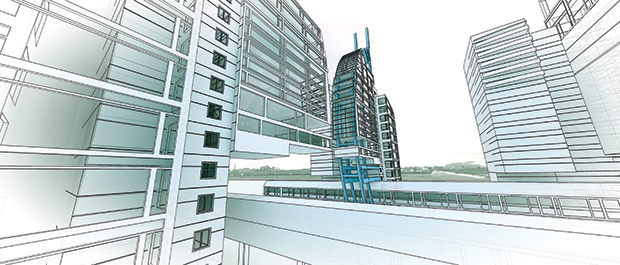Construction liens useful if filed correctly
By: WISCONSIN LAW JOURNAL STAFF//August 11, 2014//

Timing, amount key in deciding when to move for foreclosure
By Brendon Reyes

Construction liens can be useful in helping collect money or services owed, but how does one go about filing one, and when should you move ahead with foreclosure?
Wisconsin law provides a lien right to any person who “performs, furnishes, or procures any work, labor, service, materials, plans, or specifications, used or consumed for the improvement of land,” provided that the person complies with notice and filing requirements, (Wis. Stat. sec. 779.01(3)).
Construction liens are available to both “prime contractors” and laborers or subcontractors. A prime contractor is anyone, “other than a laborer, but including an architect, professional engineer, construction manager, surveyor, or other service provider, employed by the owner, who enters into a contract with an owner of land who is not personally the prime contractor … or who takes over from a prime contractor the uncompleted contract.” Section 779.01(2)(d)(1).
To secure its lien rights, however, a prime contractor must take certain steps.
First, the prime contractor must provide notice to the owner that any subcontractors it may hire will have the right to lien the property, as well. The notice must be provided in a written contract, a copy of which should be given to the owner.
If no written contract is executed, a written notice should be provided to the buyer within 10 days after performance begins. Section 779.02(2) provides the font, size, and specific language that should be included in the notice.
Providing the 779.02(2) notice to the owner is key so the prime contractor’s lien maintains its strength in relation to the subcontractors’ lien. If notice is not given, the prime contractor loses the lien unless all of the subcontractors have been paid and the subcontractors’ time to file their liens has expired, or all of them have waived their right to a lien. If service of the notice is late, the prime contractor’s lien will be subordinate to any liens previously filed.
The prime contractor also must file a lien with the clerk of court of the county in which the property affected by the lien lies, (Section 779.06). Also, at least 30 days before the lien is filed, the prime contractor must serve on the owner a notice of intent to file a lien claim. The notice must describe the nature of the claim, the amount, and the land and improvement to which it relates. Note that this notice is separate and distinct from the notice required in 779.02.
The lien must be filed within six months of the date the last materials or labor are furnished. The lien must have attached to it the following: the notice of intent to file a lien claim (779.06); the notice that subcontractors will have lien claims (779.02); a statement of the contract giving rise to the lien claim; the name of the person against whom the demand is claimed; the name of the lien claimant; the last date any labor, materials or services were furnished; a legal description of the property; a statement of the amount claimed and all other material facts. The lien claim also must be signed by the lien claimant or his attorney.
Once the lien is filed with the clerk of court, the prime contractor must serve the owner of the property with a copy of the lien claim within 30 days after filing.
When these steps are followed, the prime contractor will have a construction lien on the subject property. The lien is valid for two years from the date of filing. If the notice and timing requirements are not satisfied, no lien claim legally exists.
When to file for foreclosure
Any time within the two-year window, a prime contractor may execute the lien by filing a summons and complaint for foreclosure on the lien with the clerk of court in the county where the property lies.
But a contractor may not always want to bring an action to execute the lien once they are entitled. Primary factors a contractor should consider in deciding whether to execute the lien are whether the contractor’s lien is subordinate to other liens and mortgages; the amount owed by the owner; and the time remaining on the contractor’s lien.
Where the amount owed on the construction lien is small, and time remains on the lien, it may be more cost effective to work something out with the property owner. The lien holder also may benefit from waiting for the owner to sell the property or refinance his mortgage.
Conversely, if the amount owed on the lien is large, or there is not much time remaining in the two-year window, the 779.01 construction lien provides the contractor with a strong remedy. In those cases, where the property owner clearly will not be able to pay, a contractor is best served executing the lien swiftly.
However, unless the process detailed above is followed, a contractor will lose the lien’s protections.
Legal News
- Wisconsin joins Feds, dozens of states to hold airlines accountable for bad behavior
- Trump ahead of Biden in new Marquette poll
- Bankruptcy court approves Milwaukee Marriott Downtown ‘business as usual’ motion
- New Crime Gun Intelligence Center to launch in Chicago
- Arrest warrant issued for Minocqua Brewing owner who filed Lawsuit against Town of Minocqua
- Wisconsin Supreme Court justices question how much power Legislature should have
- Reinhart named the 2024 Wisconsin law firm of the year by benchmark litigation
- Milwaukee’s Common Council now has the most African Americans, women and openly LGBTQ members ever
- Office of School Safety Provides Behavioral and Threat Assessment Management Training Ahead of 25th Anniversary of Columbine Shooting
- Wisconsin Supreme Court to hear arguments in Democratic governor’s suit against GOP-led Legislature
- Lawsuit asks Wisconsin Supreme Court to strike down governor’s 400-year veto
- Wisconsin man pleads not guilty to neglect in disappearance of boy
WLJ People
- Power 30 Personal Injury Attorneys – Russell Nicolet
- Power 30 Personal Injury Attorneys – Benjamin Nicolet
- Power 30 Personal Injury Attorneys – Dustin T. Woehl
- Power 30 Personal Injury Attorneys – Katherine Metzger
- Power 30 Personal Injury Attorneys – Joseph Ryan
- Power 30 Personal Injury Attorneys – James M. Ryan
- Power 30 Personal Injury Attorneys – Dana Wachs
- Power 30 Personal Injury Attorneys – Mark L. Thomsen
- Power 30 Personal Injury Attorneys – Matthew Lein
- Power 30 Personal Injury Attorneys – Jeffrey A. Pitman
- Power 30 Personal Injury Attorneys – William Pemberton
- Power 30 Personal Injury Attorneys – Howard S. Sicula








